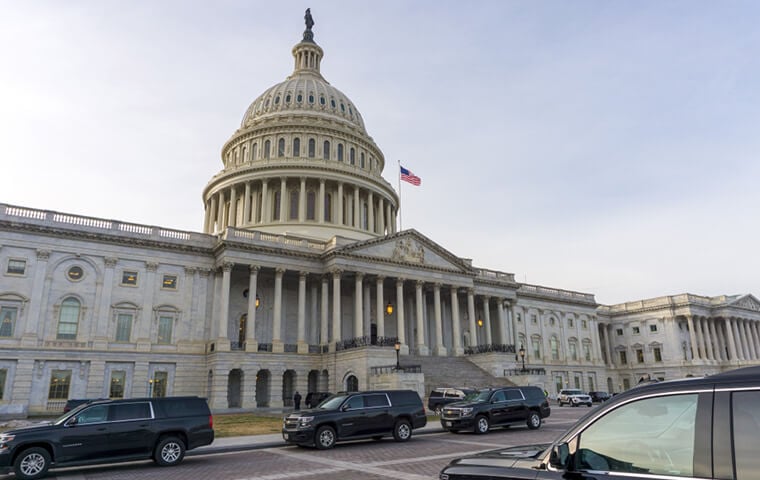 One bill would require OPM to conduct an audit of employee family members currently enrolled in the FEHB program and disenroll or remove any ineligibles. Image: Erik Cox Photography/Shutterstock.com
By: FEDweek Staff
One bill would require OPM to conduct an audit of employee family members currently enrolled in the FEHB program and disenroll or remove any ineligibles. Image: Erik Cox Photography/Shutterstock.com
By: FEDweek StaffFollowing is the section of a budget options paper circulating among Capitol Hill Republicans addressing potential reductions in the value of federal employee benefits and increases in required employee contributions toward retirement. Many of the options have been raised numerous times in the past while others—including potentially charging employees for the government’s cost to defend against appeals—are new.
Raise FERS Contribution Rate to 4.4 Percent
$44 billion in 10-year savings
• In the Federal Employees Retirement System (FERS), employee contribution rates are tiered by year hired: 0.8 percent if hired in 2012 and earlier, 3.1 percent if hired in 2013, and 4.4 percent if hired in 2014 and after. This option would raise the contribution rate across-the-board to 4.4 percent.
Eliminate FERS Supplemental Retirement Payments
$5 – $13 billion in 10-year savings
• This option would eliminate the supplement to FERS employees who retire before they are eligible for Social Security. Under current law, if an employee retires before 62, a supplemental FERS payment is made to bridge the employee until they are eligible for Social Security. This change will align federal retirement policies more closely with the private sector and encourage longer service.
Base FERS Retiree Benefit on High-5 Instead of High-3 Salary
$4 billion in 10-year savings
• This policy option would change the FERS retirement formula to use the average of employees’ earnings over the five consecutive highest earning years as opposed to the currently used calculation of the highest three consecutive years. This shift, which would reflect employees’ career earnings more accurately and be more in line with private sector plans, would reduce FERS spending to ensure the system’s long-term sustainability.
Enact Federal Employee Health Benefits Protection Act (H.R. 7868)
$2.1 billion in 10-year savings
• Under this Act, OPM must conduct a comprehensive audit of employee family members currently enrolled in the FEHB program and disenroll or remove from enrollment any ineligible individual found to be receiving FEHB benefits. This reform would reduce improper payments, saving $2.1 billion over 10 years.
Convert New Federal Workers to At-Will Employment Unless They Accept Higher FERS Contribution
Unknown savings
• This option would require future federal employees to elect between two classification systems: the current system with merit-based civil service protections or a new at-will classification. If an employee elects to be classified as an at-will classification, they will maintain a lower FERS annuity contribution rate (4.4 percent or lower). However, for employees that elect to be classified under the current merit-based civil service system, their annuity employee contribution would be increased to a higher rate. Since a significant percentage of future civil service employees would elect to take advantage of the job protections of the current merit-based civil service system, this reform should yield mandatory savings due to the reduction in the federal agency’s FERS annuity contribution share.
Eliminate Official Time Unless Unions Compensate the Federal Government
Unknown savings
• This reform would charge federal labor organizations for their use of agency resources as well as any official time.
Charge a Fee for Federal Employee MSPB Appeals
Unknown savings
• Federal employees subject to adverse action by their agency, including dismissal, can appeal their case to the Merit Systems Protection Board (MSPB). In the majority of cases, MSPB upholds the ruling of the agency. This policy option would charge a fee for federal employee MSPB appeals, raising revenue while reducing the cost of frivolous MSPB filings.
Adjustment to Limit of Federal Employee Buy-Outs
Unknown savings
• This policy option would increase the federal employee buy-out threshold from the existing $25,000 maximum allowance for civilian employees to $40,000 (in parity with DOD’s current authority) and would establish a $2 billion Voluntary Separation Incentive Payment Fund within the U.S. Treasury to fund these buyouts. It would also lower the 20-year Voluntary Early Retirement (VER) option to 15 years of service.
Move FEHB from a Premium-share Model to a Voucher Model
$16-18 billion in 10-year savings
• The FEHB program provides the federal workforce and annuitants (and their dependents and survivors) with health insurance coverage. The FEHB program also covers postal workers but beginning in 2025, those benefits will be provided through the Postal Service Health Benefits (PSHB) program. Under this option, the FEHB and PSHB programs would be reformed by replacing the current premium-sharing structure with a voucher, which would not be subject to income and payroll taxes. CBO classifies the federal share of premiums for most federal employees as discretionary but federal spending on premiums for annuitants and postal workers is classified as mandatory.
Deferred Resignation Periods about to End for Many; Overall 12% Drop
Retirement Surge Likely as Deferred Resignation Periods End
Senate Rejects Bills to Defer Shutdown; Familiar Process Lies Just Ahead
Senate Bill Would Override Trump Orders against Unions
Report Describes Impact of Shutdown on Employees, Agencies
TSP Adds Detail to Upcoming Roth Conversion Feature
See also,
How to Handle Taxes Owed on TSP Roth Conversions? Use a Ladder
The Best Ages for Federal Employees to Retire
Best States to Retire for Federal Retirees: 2025

